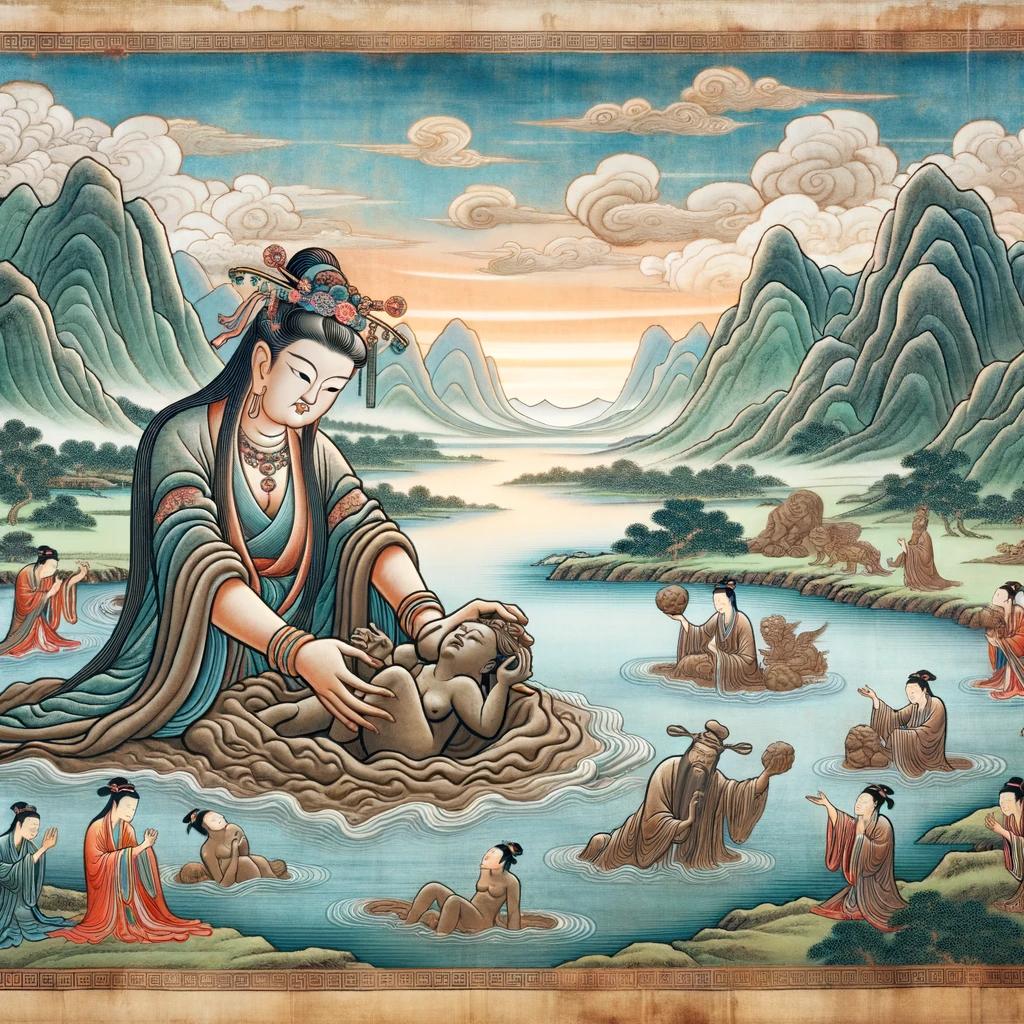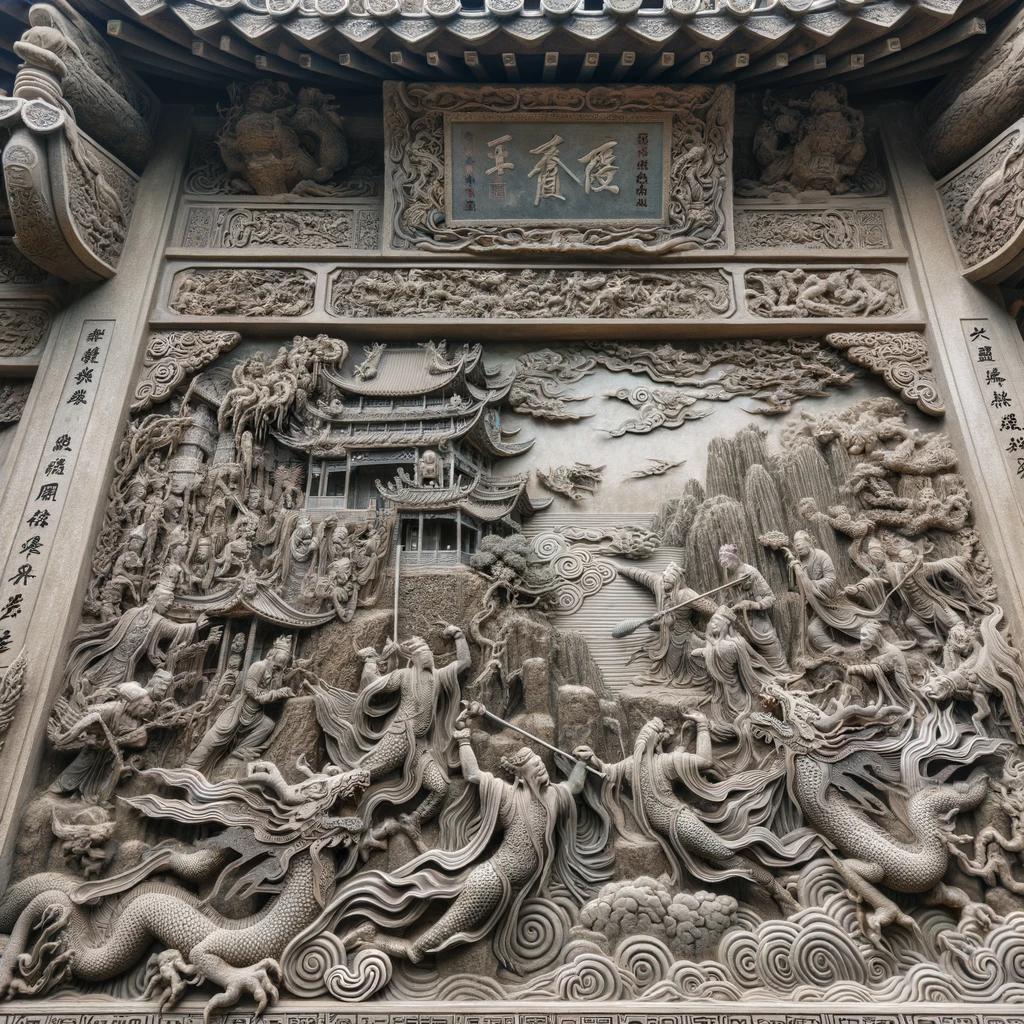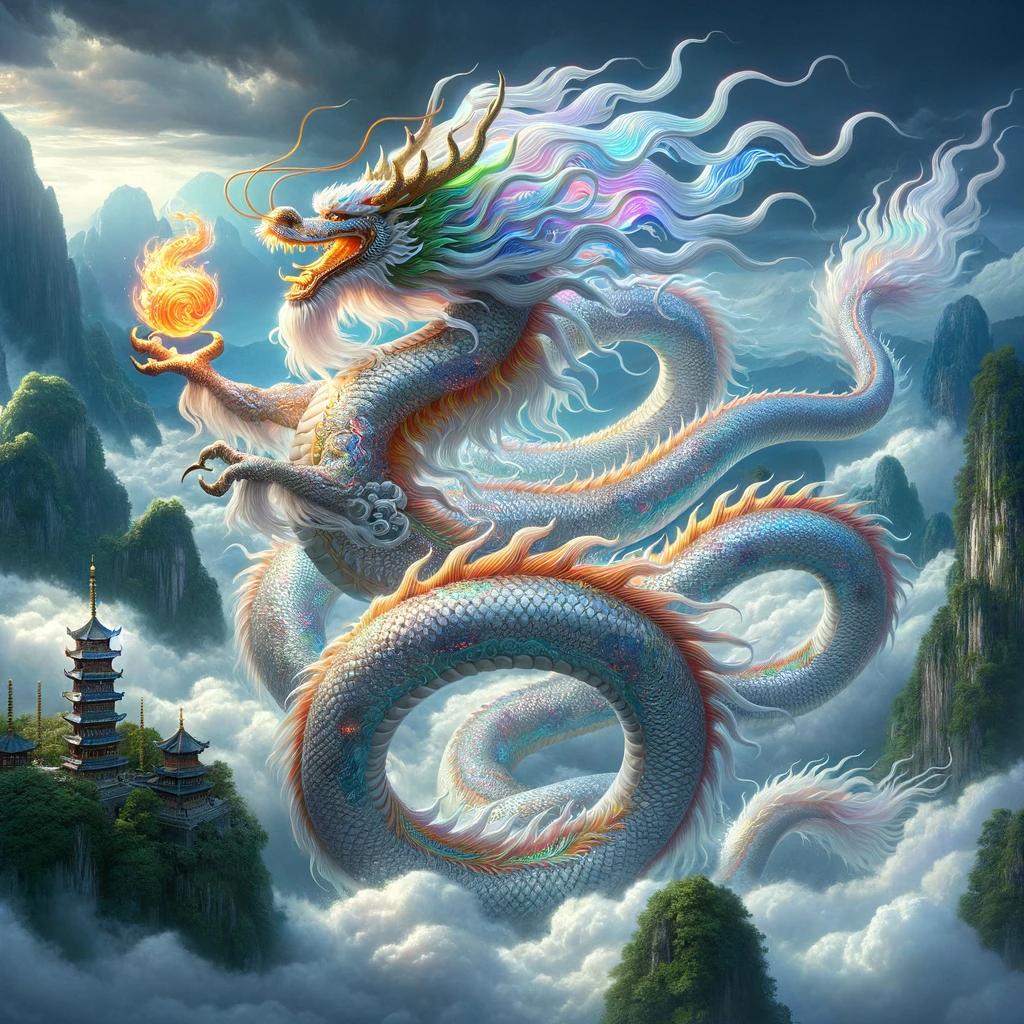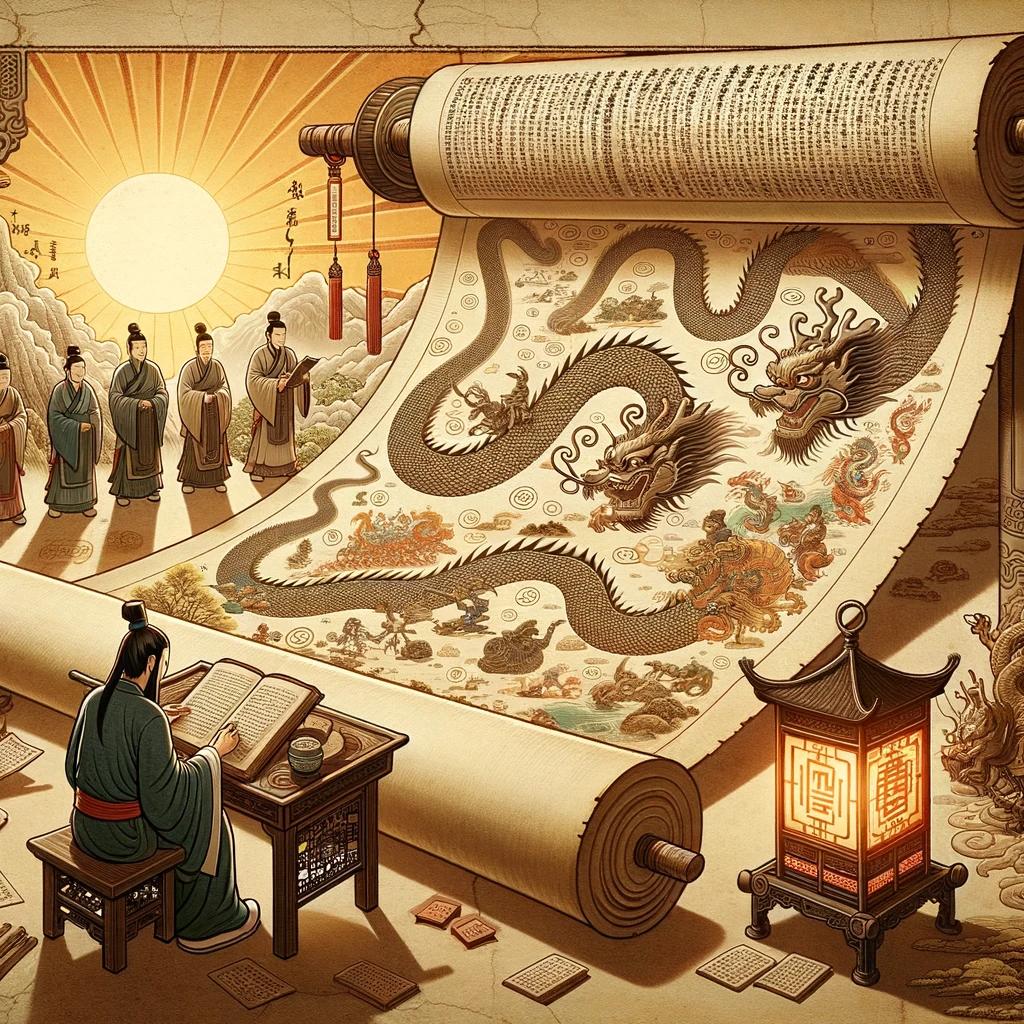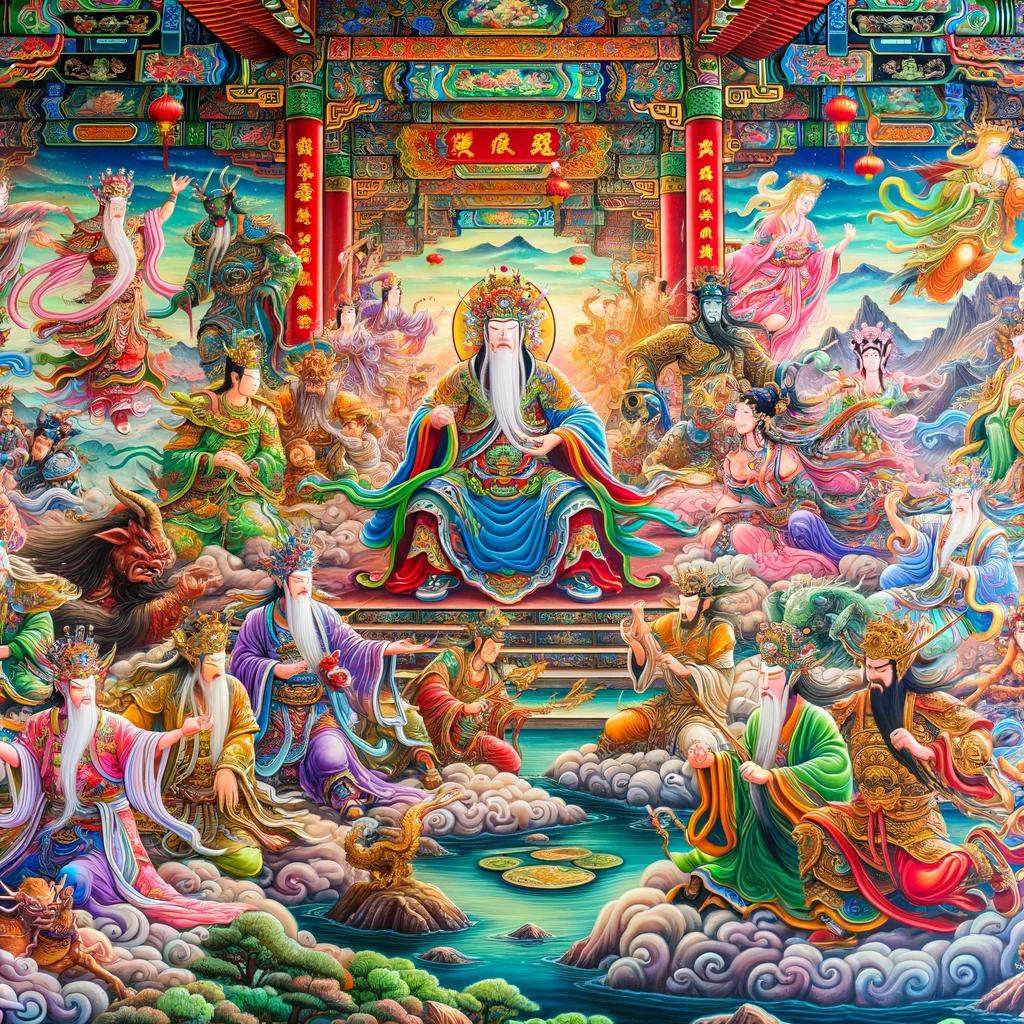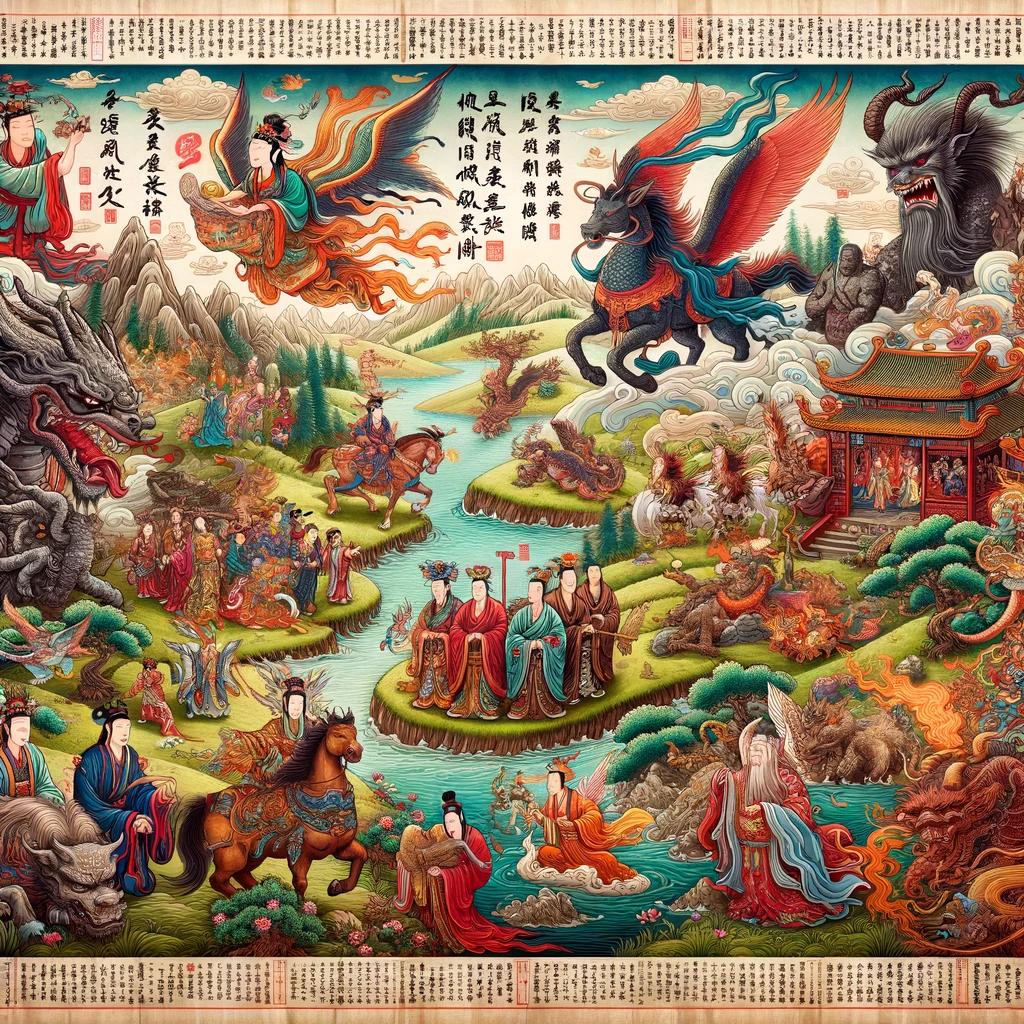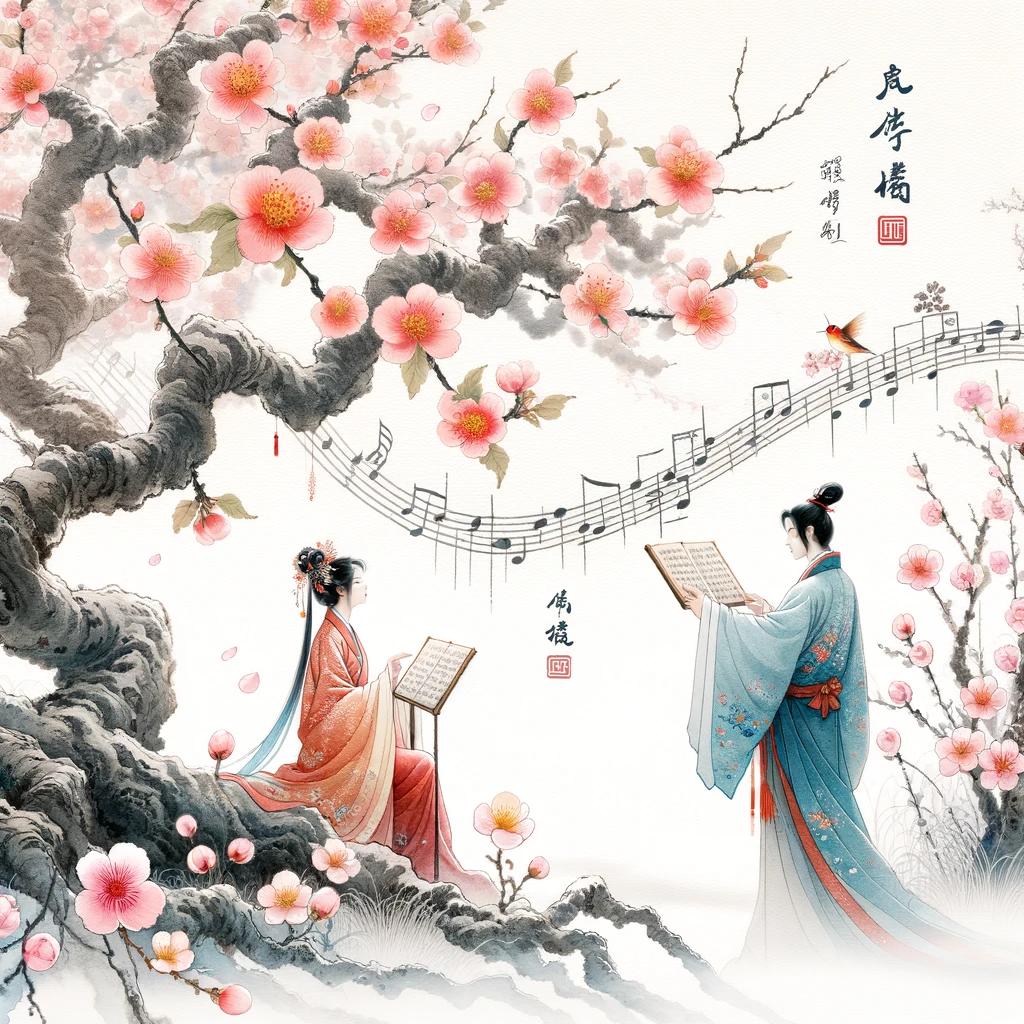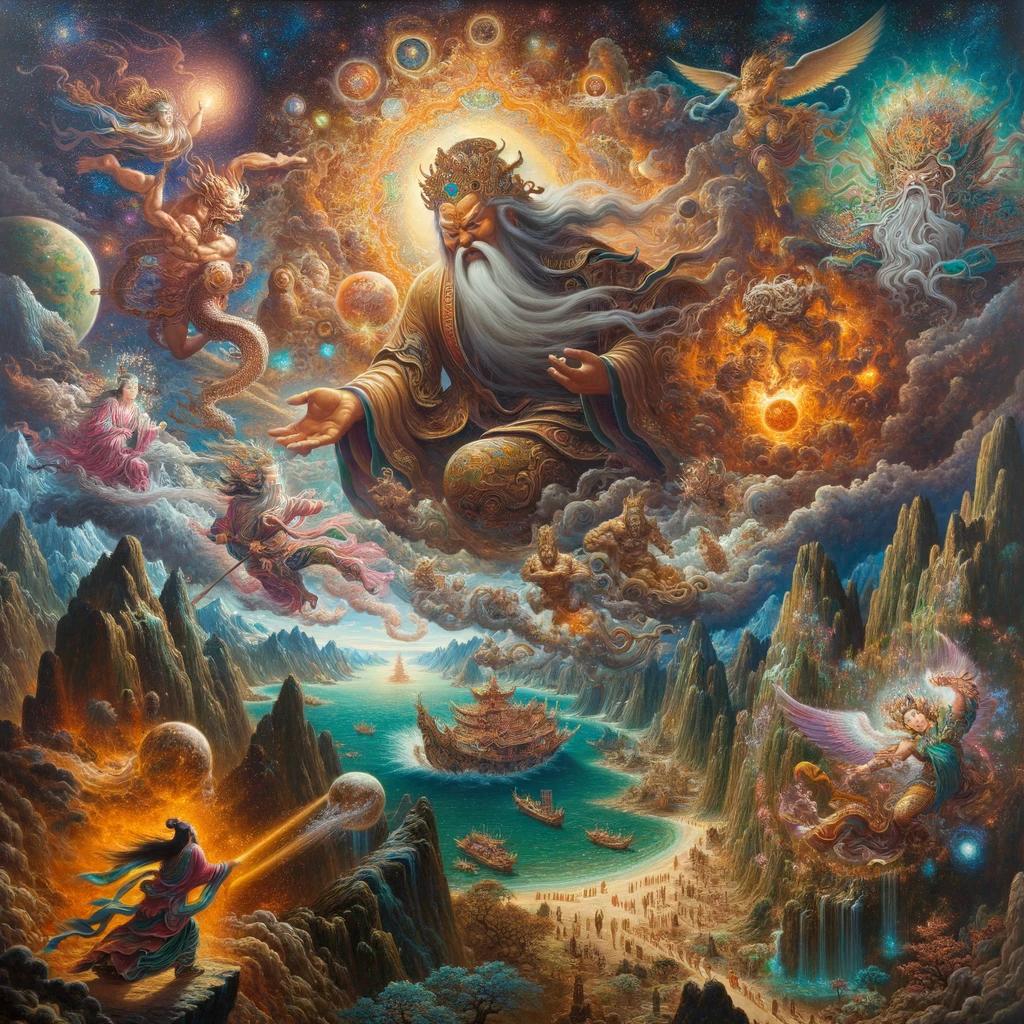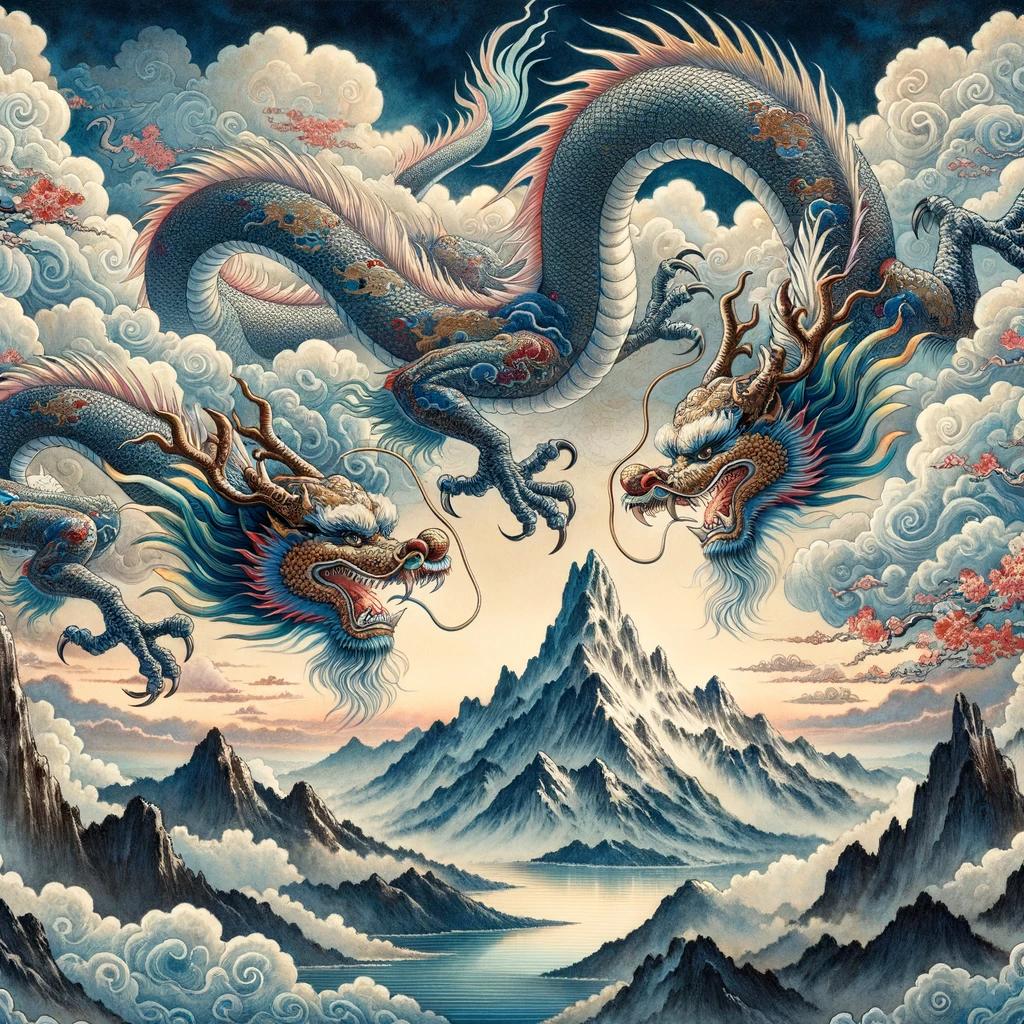Who Created Humans in Chinese Mythology: Unraveling the Origins
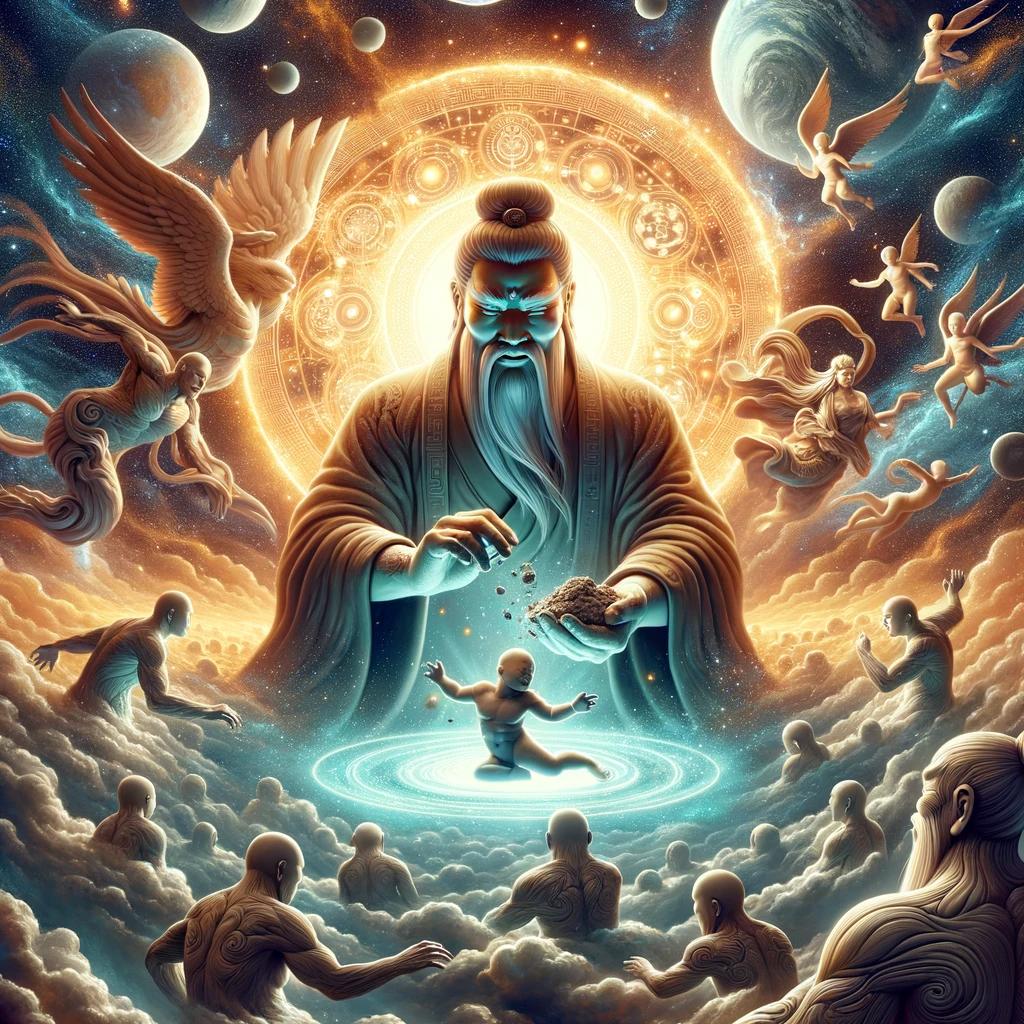
In Chinese Mythology, the concept of who created Humans revolves around multiple myths and divinities. One prominent figure is Pangu, a mythical hero who emerged from chaos and separated the heavens from the earth.
Another important deity is Nüwa, believed to have shaped humans from clay. This article explores the diverse creation myths in Chinese culture, their significance, and the comparisons with other mythologies. It also delves into the symbolism behind the divine figures and their contributions to the world.
Dive into the intriguing world of Chinese creation myths and uncover their cultural importance.
The Concept of Creation in Chinese Mythology
Chinese mythology encompasses a rich tapestry of creation myths that offer unique insights into the origins of the world and the human existence. Unlike monotheistic traditions, Chinese mythology does not revolve around a singular creator god or divine will.
Instead, it weaves together numerous, contradictory myths of origin, leaving room for interpretation and cultural diversity.
The Absence of a Single Creator God
In contrast to many Western mythologies, Chinese mythology does not center around a single omnipotent creator deity. Rather, it embraces a variety of divine beings and primordial forces that played significant roles in the creation of the universe and humanity.
These myths reflect the non-linear nature of Chinese cosmogony and the belief that creation emerged from a complex interplay of energies and elements.
The Role of Chaos in Creation Myths
One common theme in Chinese creation myths is the concept of chaos as a primordial state preceding the formation of the world. The myths illustrate how order emerged from chaos through the actions of divine beings or legendary figures.
These tales describe the struggle to separate and organize fundamental elements, shaping the heavens, earth, and all living beings in the process.
The Yin and Yang Duality
The concept of Yin and Yang plays a fundamental role in Chinese creation myths. Yin represents the feminine, receptive, and passive energy, while Yang embodies the masculine, assertive, and active energy.
These opposing forces are believed to have interacted and intertwined during creation, giving rise to the harmonious balance that underlies the Chinese worldview. The Yin and Yang duality is not only present in the creation of the world but also in the nature of humanity itself, showcasing the interconnectedness of all things.
Pangu: The Mythical Hero of Creation
Pangu is a central figure in Chinese creation myths, known as the heroic figure who played a crucial role in the formation of the world. His story revolves around several key aspects that highlight his significance in Chinese cosmogony.
Awakening from Chaos
According to the myth, Pangu emerged from the primeval chaos known as the “Cosmic Egg” or “Great Egg.” This divine being awakened and gradually separated the chaotic elements, setting the stage for creation.
Separation of Heaven and Earth
With his giant axe, Pangu spent thousands of years tirelessly laboring to separate the heavens and earth. He wielded his axe, cleaving the chaos to create a clear distinction between the sky above and the earth below.
Pangu’s Transformation and Contributions
After completing his monumental task, Pangu’s body underwent a transformation, becoming the elements of nature and the cosmos. His breath became the wind, his voice transformed into thunder, his eyes became the sun and the moon, his hair turned into stars, and his blood flowed as rivers and lakes.
Pangu’s contributions extended beyond his physical transformation. He continued to exist between the heavens and earth, exerting his strength to hold up the sky and expand the land, ensuring stability and balance in the newly created world.
Pangu, with his heroic feats and transformative influence, holds a significant place in Chinese cosmology. His story exemplifies the profound relationship between ancient Chinese mythology and the creation of the universe, setting the stage for the subsequent emergence of humanity and the deities associated with their existence.
Nüwa: The Goddess of Humanity
Nüwa, a prominent figure in Chinese mythology, is revered as the goddess responsible for the creation of humanity. Her role in shaping the human race has been depicted in various myths and legends.
Let’s delve into the details of Nüwa’s significant contributions:
Nüwa’s Creation of Humans
According to ancient Chinese beliefs, Nüwa is believed to have individually crafted humans using yellow clay. With her skilled hands, she meticulously formed each person, shaping them with care and attention to detail.
This act of creation demonstrates Nüwa’s loving and nurturing nature towards humanity.
Different Versions of Nüwa’s Creation
Interestingly, different versions of the myth exist, providing varying accounts of Nüwa’s creation process. In some versions, Nüwa is said to have exclusively fashioned the nobles and wealthy individuals out of yellow soil.
Meanwhile, the commoners were believed to have been shaped from brown mud, underscoring social hierarchies prevalent in ancient Chinese society.
Nüwa’s Role in Restoring the World
Nüwa’s influence extends beyond the creation of humans. In Chinese mythology, she played a vital role in repairing the world after a fierce battle among the gods caused immense devastation.
Utilizing colorful stones and the legs of a turtle, Nüwa embarked on a mission to seal the holes in the sky, ensuring the restoration of peace and happiness in the human realm.
Her actions symbolize her compassion and dedication towards safeguarding humanity.
The captivating tales surrounding Nüwa shed light on her profound impact as the goddess of humanity in Chinese mythology, from creating humans with meticulous craftsmanship to restoring balance and harmony within the world.
Comparisons with Other Creation Myths
When examining creation myths in Chinese culture, it is intriguing to note the similarities they share with the creation myths of other ancient civilizations, such as Mesopotamian, Egyptian, and Greek mythologies.
Similarities with Mesopotamian, Egyptian, and Greek Mythologies
Like the Chinese myths, the creation stories in Mesopotamian, Egyptian, and Greek mythologies also involve the concept of chaos preceding the creation of the world. These myths often depict the emergence of order from chaos and the presence of primordial beings or powerful deities responsible for the creation of the universe and humankind.
Additionally, these ancient mythologies highlight the significance of powerful forces like water, primordial substance, and divine entities shaping the world and its inhabitants.
Unique Elements in Chinese Cosmology
While Chinese creation myths share similarities with other cultures, they also have distinct elements that set them apart. One notable difference is the emphasis on the concept of qi, the vital energy, as a fundamental element in Chinese cosmology.
Unlike the primacy of water in Mesopotamian, Egyptian, and Greek mythologies, the Chinese view the interplay of opposing forces, yin and yang, as crucial in shaping the world.
Furthermore, the myths feature specific mythical figures like Pangu and Nüwa, who play significant roles in the creation and preservation of the universe and humankind.
The stories highlight their unique attributes and actions, exploring the intricate relationship between the divine figures and the world they bring into existence.
In summary, comparisons between Chinese creation myths and those of other civilizations reveal both shared themes and distinctive elements.
While the concept of chaos preceding creation and the involvement of powerful beings resonate across cultures, the emphasis on qi and the specific figures like Pangu and Nüwa differentiate Chinese cosmology.
The exploration of these comparisons enhances our understanding of how diverse cultures interpreted and expressed the origin of the world and human existence.
The Divine Figures and their Attributes
The creation myths of Chinese mythology introduce us to fascinating divine figures and their unique attributes. Let’s explore the relationship between Pangu and Nüwa, their role in Chinese folklore, and the symbolism of the elements in the creation story.
Relationship between Pangu and Nüwa
In Chinese mythology, Pangu and Nüwa are significant figures closely linked to the creation of the world and humanity. While Pangu is known as the mythical hero who separates heaven and earth, Nüwa is recognized as the goddess who shaped humans.
Although their roles differ, their connection highlights the complementary nature of their roles in the grand narrative of creation.
Pangu and Nüwa in Chinese Folklore
Pangu and Nüwa not only hold vital roles in the creation myths but also feature prominently in various Chinese folklore tales. Their stories have been passed down through generations, depicted in traditional art, and celebrated during cultural festivals.
These beloved divine figures continue to captivate the imagination of the Chinese people and serve as symbols of their rich mythological heritage.
Symbolism of the Elements in Creation
The elements play a significant role in the creation myths of Chinese mythology, representing profound symbolism. Pangu’s separation of heaven and earth symbolizes the emergence of order from chaos.
The transformation of Pangu’s body parts into natural elements, such as stars, rivers, and wind, emphasizes the harmonious interconnectedness between humans and the cosmos. Nüwa’s use of clay and different materials to create humans represents the diverse nature of humanity and their grounded connection to the earth.
Overall, the dynamic relationship between Pangu and Nüwa, their presence in Chinese folklore, and the symbolism of the elements in creation provide captivating insights into the rich tapestry of Chinese mythology.
Through these divine figures and their attributes, the creation myths continue to shape the cultural identity and belief systems of the Chinese people in the present day.
- Relationship between Pangu and Nüwa: Explore the intertwined roles of Pangu and Nüwa as key figures in Chinese creation myths.
- Pangu and Nüwa in Chinese Folklore: Discover the enduring presence of Pangu and Nüwa in Chinese folklore stories and cultural traditions.
- Symbolism of the Elements in Creation: Delve into the profound symbolism behind the elements used by Pangu and Nüwa in shaping the world and humanity.
Variations of Creation Myths across Chinese Culture
In Chinese mythology, the creation stories vary across different regions, reflecting unique cultural perspectives and beliefs.
These regional differences add depth and diversity to the overall mythology, highlighting the rich tapestry of Chinese culture.
Regional Differences in Creation Stories
Within China, various provinces and ethnic groups have their own distinct creation myths, each with its own set of deities and narratives. For example:
- The Miao people of southern China believe in the creation story of the “Twelve Ancestors,” emphasizing the role of divine beings and animals in shaping the world and humanity.
- In northern China, the Mongols have a creation myth centered around the sky god Tengri and the goddess Umai, highlighting their contributions to the formation of the universe and human existence.
- The Bai people of Yunnan province have a creation myth that features a divine couple, Asha and Dage, who work together to bring life and order to the world.
Influence of Folklore and Local Beliefs
Local folklore and beliefs often interweave with creation myths, adding layers of cultural significance and depth.
These influences shape the specific details and variations found within each regional creation story.
The profound connection between mythology and daily life in Chinese culture is apparent in the depiction of natural landscapes, animals, and celestial bodies in creation myths.
These elements reflect the reverence for nature and the importance of harmony between humans and the natural world.
- Local beliefs in ancestor worship and reverence for spirits often find their way into creation stories, highlighting the enduring influence of ancestral heritage on Chinese society.
- The fusion of Taoist, Confucian, and Buddhist ideologies further adds complexity and layers of interpretation to the creation myths across different regions.
These regional variations and influences illustrate the dynamic nature of Chinese mythology, rooted in diverse cultural traditions and ancient beliefs.
Exploring the unique creation stories from various regions provides a deeper understanding of the tapestry of Chinese culture and its rich mythological heritage.
The Significance of Creation Myths in Chinese Culture
The creation myths in Chinese culture hold profound significance, offering insights into the ancient Chinese worldview, shaping values and beliefs, and inspiring modern interpretations and adaptations.
Understanding the Worldview of Ancient Chinese
These myths provide a window into the way ancient Chinese people perceived the world. They encompassed intricate ideas of cosmic forces, harmonious balance, and the interplay between humans, nature, and the divine.
Creation myths reflected their philosophical and spiritual understanding, emphasizing the interconnectedness of all living beings and the cyclical nature of existence.
Role of Creation Myths in Shaping Values and Beliefs
Creation myths played a vital role in shaping the values and beliefs of ancient Chinese society. They imparted moral lessons, emphasized duty, and laid the foundation for societal values like harmony, filial piety, respect for nature, and the importance of maintaining cosmic order.
These myths were an integral part of education and cultural transmission, guiding individuals in their moral conduct and social responsibilities.
Modern Interpretations and Adaptations
Creation myths continue to inspire modern interpretations and adaptations in various forms of art, literature, and cultural practices. They serve as a source of inspiration for contemporary Chinese artists, writers, and filmmakers who explore and reinterpret these ancient tales, keeping the spirit of the mythology alive in contemporary society.
These reinterpretations often aim to bridge the gap between tradition and modernity, exploring the relevance of ancient narratives in the context of the present.
.

